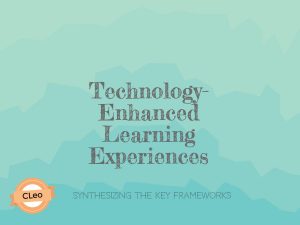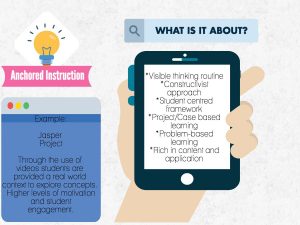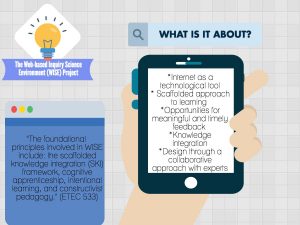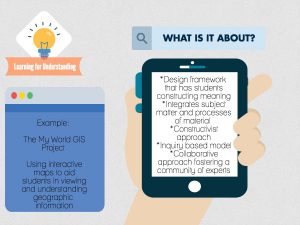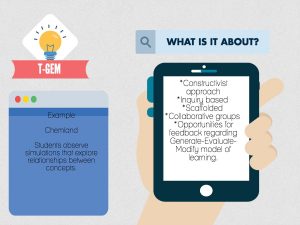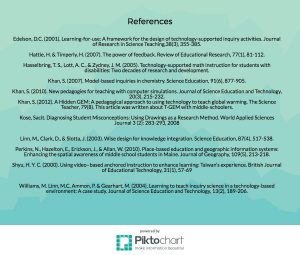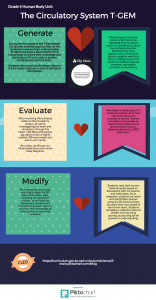According to Finklestein et al. (2005) students who use computer visualization simulations are better able to understand concepts and knowledge regarding a particular subject matter. One area that students have demonstrated consistent difficulty in has been the understanding of equivalent fractions in math. Through the use of Illuminations visual simulation, students can begin to explore this concept as an extension of hands-on activities done in class. As Clements (2014) notes, within the field of mathematics there are many different definitions to describe visualization. Zimmermann and Cunningham (1991) describe visualization as, “we take the term visualization to describe the process of producing or using geometrical or graphical representations of mathematical concepts, principles or problems, whether hand drawn or computer generated.” Therefore to aid in the understanding of equivalent fractions I have used the T-Gem model along with Illuminations.
Materials:
Math learning log
Computer to log onto site
iPad to document reflection (App-pic collage)
Step One (Independent reflection)
Generate
To begin the lesson, have students record their definition of what an equivalent fraction is (IB Key concept of form) and what the function of an equivalent fraction is (IB Key concept of function*) into their learning log. Have students write or draw pictures of times they may have used equivalent fractions in their day to day life. Students essentially are completing a KWL of what they intend to learn about equivalent fractions before exploring the web-based site.
*Within the IB Curriculum framework, students in the PYP explore the central idea of the unit (similar to BC’s Big Idea) from one of the 8 key concepts. Through the use of the key concepts often used in science and social studies curriculum, students continue to learn about the key concepts in math class, and reinforce the connect to the big ideas.
Possible extension is to have students share their KWL in small groups of 2-3. Providing opportunities for students to express confidence and misconception with their peers is important part of the scaffolding process, so that all learners feel confident and willing to take risks in their inquiry process.
**Students can take pictures of their written work to include in the reflection piece where we use Pic Collage to create an image consolidating their thinking and learning.
Step 2- Evaluate
Students log onto the Illuminations site
Working independently at first they begin to explore the different options, either choosing the automated option or creating a fraction of their choice.
Afterwards, have students work together in pairs to choose their own fraction. One student chooses and the other attempts to find equivalent fractions. Part of the process should be verbal discussion explaining their decision making. The student who chose the fraction should record the other students thinking in their learning log. This can be used as part of the reflection piece as well as class discussion. Switch so that both partners have a chance to visit site and record thinking and learning.
During this time, teacher circulates around to groups to discuss the form, function, accuracy and misconceptions. Provide timely and meaningful feedback for students to attend to their understanding.
Step 3 Modify
Students then return to their seats to work on completing an equivalent fraction of their choice. Students take a picture of their computer simulation to include in their reflection piece.
Step 4 Reflection
Students return to their KWL in their learning log to amend any ideas thoughts in a different colour pen. They then begin working on their pic collage to include all elements of the learning engagement (KWL, partner notes, etc.) Teacher circulates to read the changes in student thinking, taking note for next lesson’s hook.
Step 5-Exit Ticket
Students share their Pic Collage with the teacher, allowing the teacher to look over their work and revisit any misconceptions for the next class. The reflection piece will be included in their student portfolios.
References
Clements, M. K. A. (2014). Fifty years of thinking about visualization and visualizing in mathematics education: A historical overview. In Mathematics & Mathematics Education: Searching for Common Ground (pp. 177-192). Springer Netherlands.
Finkelstein, N.D., Perkins, K.K., Adams, W., Kohl, P., & Podolefsky, N. (2005). When learning about the real world is better done virtually: A study of substituting computer simulations for laboratory equipment. Physics Education Research,1(1), 1-8. Retrieved April 02, 2012.
Khan, S. (2010). New pedagogies for teaching with computer simulations. Journal of Science Education and Technology, 20(3), 215-232. Khan, S. (2012). A Hidden GEM: A pedagogical approach to using technology to teach global warming. The Science Teacher, 79(8). This article was written about T-GEM with middle-schoolers.

